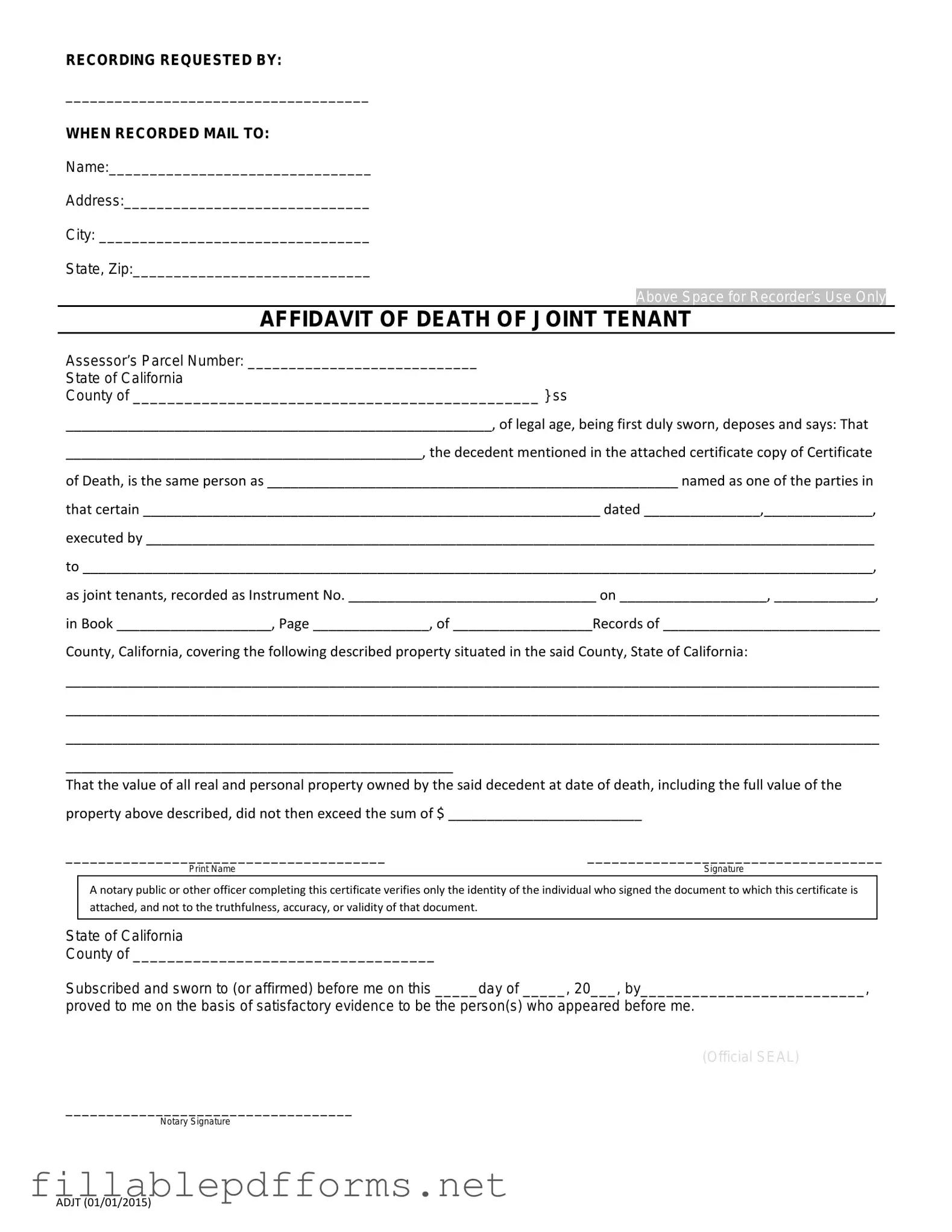The California Death of a Joint Tenant Affidavit form plays a crucial role in the transfer of property ownership when one joint tenant passes away. This legal document serves as a formal declaration, allowing the surviving joint tenant to assert their right to the deceased's share of the property. By completing this affidavit, the surviving tenant can effectively remove the deceased tenant's name from the title, ensuring a smooth transition of ownership. The form typically requires essential details such as the names of the joint tenants, the date of death, and relevant property information. Additionally, it may need to be notarized to validate the signatures and ensure its acceptance by the county recorder's office. Understanding how to properly fill out and file this affidavit can simplify the often complex process of estate management, providing peace of mind during a challenging time. It is important to gather all necessary documentation, including a certified copy of the death certificate, to accompany the affidavit and support the claim. Overall, the California Death of a Joint Tenant Affidavit is an essential tool for managing joint tenancy property rights after a loss.
